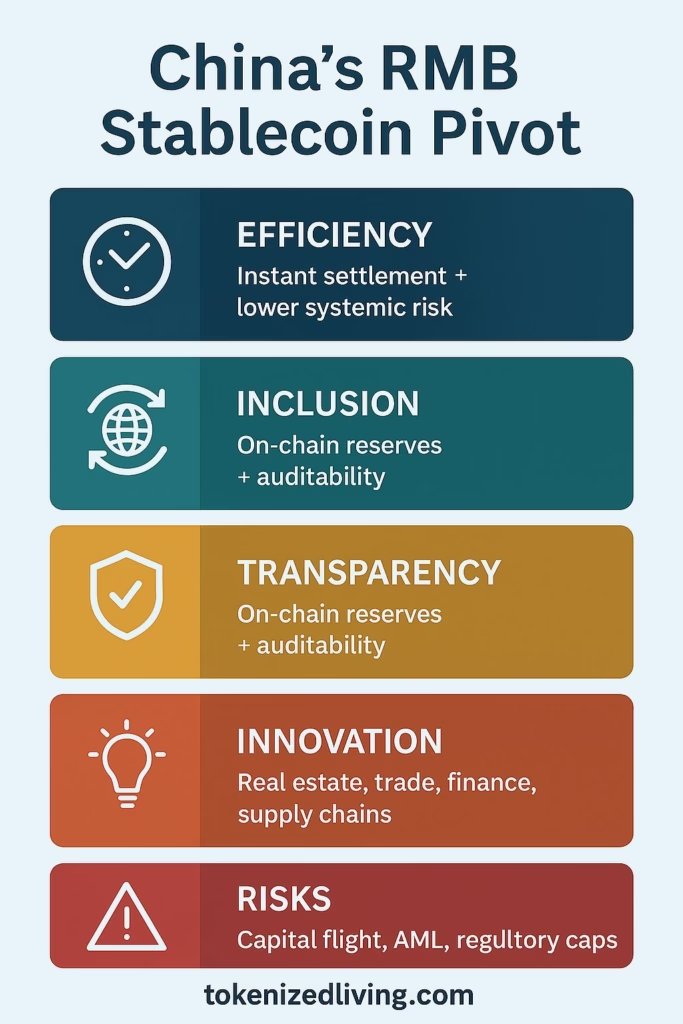China is weighing yuan-backed stablecoins to expand RMB use abroad. Beyond geopolitics, the move unlocks efficiency, financial inclusion, and innovation in tokenization. Hong Kong is set to lead the rollout with a new licensing regime.
China is considering yuan-backed stablecoins to boost global currency usage.” — Reuters
🌍 Why China Stablecoins Pivot Matters
China banned crypto trading in 2021. Now, policymakers are exploring licensed RMB China stablecoins. The State Council may approve a roadmap this month. This decision could redefine cross-border rails and inject momentum into Asia’s tokenization ecosystem.
⚡ Efficiency Beyond Transactions
RMB stablecoins allow instant settlement and real-time reporting. Businesses reduce reliance on outdated cross-border systems. For tokenized assets, stablecoins act as a reliable “cash leg,” enabling atomic settlement for tokenized securities and real-world assets.
💸 Financial Inclusion & Accessibility
Stablecoins can democratize access. SMEs, often underserved by global banks, could use RMB rails for faster, cheaper trade. By anchoring tokenized platforms in a licensed stablecoin, more investors—whether in Lagos, Manila, or Shanghai—can access global opportunities alongside New York or London.

🔍 Transparency & Trust with China Stablecoins
Blockchain-based RMB stablecoins provide immutable audit trails. Reserve attestations could be published directly on-chain. This fosters trust in environments where opacity is the norm and aligns with Beijing’s demand for risk controls.
🏗️ Innovation Across Industries
- Real Estate: RMB stablecoins improve liquidity for tokenized property investments.
- Trade Finance: Tokenized invoices and escrows can settle instantly in RMB.
- Supply Chains: Stablecoin payments simplify tokenized goods tracking.
- Capital Markets: A stable RMB cash rail supports tokenized funds and bonds.
Hong Kong is spearheading this rollout. Its Stablecoins Ordinance, effective Aug 1, 2025, mandates licensing for all fiat-referenced issuers.
✅ Conclusion: A Controlled Leap Forward
China’s pivot toward RMB stablecoins is less about chasing hype and more about global influence. If realized, it strengthens RMB adoption, enhances tokenization infrastructure, and empowers SMEs with new rails. With Hong Kong leading the way, the future of tokenization in Asia could be built on RMB-backed foundations.
❓ FAQs: RMB China Stablecoins
Not yet. The State Council is reviewing a roadmap. Hong Kong will lead the pilots.
The e-CNY is central bank money. Stablecoins are private liabilities, licensed and fully reserved. They complement each other.
Exporters, tokenization platforms, and fintechs ready for compliance.
Capital controls, illicit flows, and concentration of issuers. Expect caps and strict audits.
Its regulatory sandbox offers a safer environment before mainland adoption.

